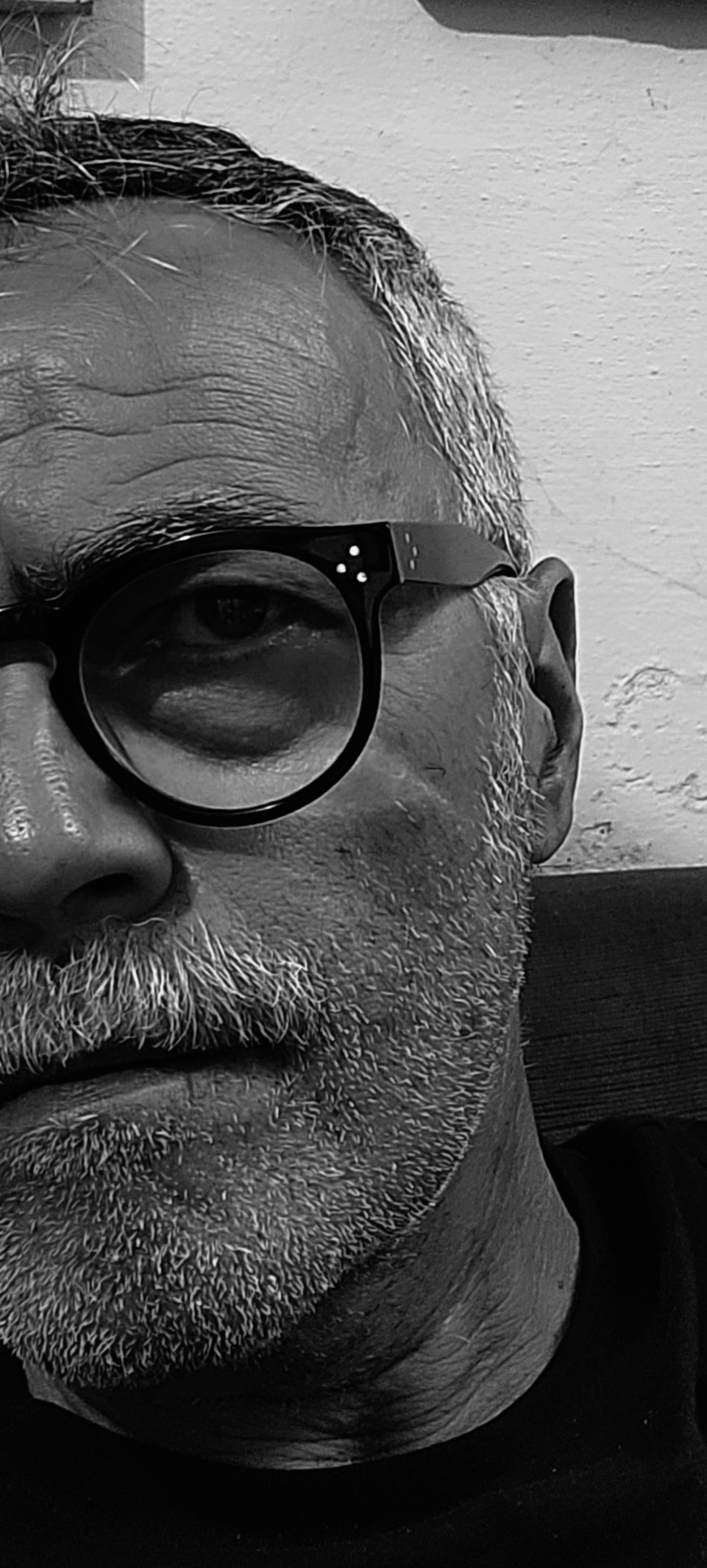
PAOLO PALLARA
Paolo Pallara vive e lavora a Ferrara dove è nato nel 1956.
Da molti anni sperimenta una pittura materica nella quale tensioni informali si accompagnano ad una visione onirica spesso manifesta. La sua pittura si presenta come un’avventura dello spirito in cerca di ragioni per l’esistenza e in questo andare trova immagini che mettono a fuoco i momenti fondamentali. Pallara ama la serialità. Ha bisogno, infatti, di ritornare ad approfondire, a scrutare le minime modificazioni degli aspetti indagati, tante e tali sono le variazioni dello spirito e del cuore, tanto numerose sono le sfaccettature dell’identità personale, tanto infinito è il lavoro di analisi che come artista continuamente compie. All’interno del tema principale sono diverse le serie di approfondimento, complice non solo la scansione spaziale dei luoghi ma anche degli argomenti toccati. In tal modo la figura simbolo diventa riflessione di una più ampia considerazione sugli stati d’animo, sulle pulsioni di vita di ognuno di noi. Le sue opere, in quanto interpretazioni dei sentimenti provati dall’artista nei vari periodi della sua vita, sollecitano nello spettatore momenti di identificazione. Alcune serie sono maggiormente improntate al segno e meno al gioco delle sovrapposizioni o sottrazioni di materiali e smalti, dei piccoli inserti di carta o di garza, altre esaltano una sequenzialità che ricorda scansioni affettive, pulsioni, desideri ed emozioni.
L’utilizzo, in alcuni casi, di materiali come il ferro, il cuoio, o vecchi giornali e manoscritti dei primi del novecento fanno emergere sulle tele o nelle sculture un confronto tra memoria e destino, attese e timori, bisogno di vivere di fronte all’ineluttabilità della morte; tutti materiali che attestano la loro storia, rivendicano una nuova possibilità, al di fuori dell’uso consueto.
Paolo Pallara lives and works in Ferrara where he was born in 1956.
For many years he has been experimenting with a material painting in which informal tensions are accompanied by an often manifest dreamlike vision. His painting is presented as an adventure of the spirit in search of reasons for existence and in this going he finds images that focus on the fundamental moments. Pallara loves seriality. In fact, it needs to go back to deepening, to scrutinize the minimal modifications of the aspects investigated, so many and such are the variations of the spirit and of the heart, so numerous are the facets of personal identity, so infinite is the work of analysis that as artist continually performs. Within the main theme there are several in-depth series, thanks not only to the spatial scanning of the places but also of the topics touched upon. In this way the symbolic figure becomes a reflection of a broader consideration on the moods, on the life impulses of each of us. His works, as interpretations of the feelings experienced by the artist in the various periods of his life, solicit moments of identification in the viewer. Some series are more marked by the sign and less by the game of overlapping or subtracting materials and glazes, small inserts of paper or gauze, others enhance a sequentiality that recalls affective scansions, impulses, desires and emotions.
The use, in some cases, of materials such as iron, leather, or old newspapers and manuscripts from the early twentieth century bring out on canvases or sculptures a comparison between memory and destiny, expectations and fears, the need to live in the face of ‘inevitability of death; all materials that attest to their history, claim a new possibility, outside of the usual use.